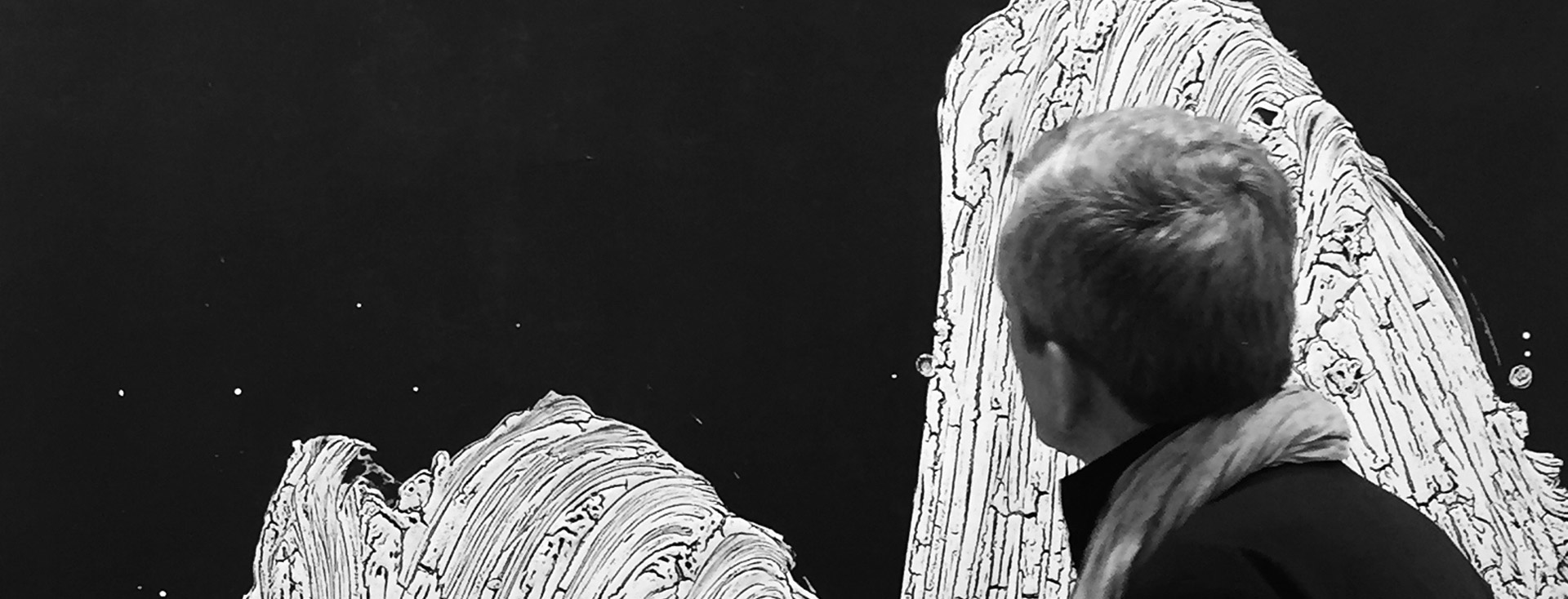‘Perhaps one of the most inspiring things for me in contact with painting – alongside the opportunities it offers for visiting the aesthetic phenomenon, the convolutions and particularities of the human mind, the strength of language, virtuosity, the unimaginable determination of artists, all rounded off by encounters – is this effect of the work maturing. It is hardly a metaphysical word, as an artwork’s life cycle genuinely does exist. In some ways it is similar to wine in terms of how it improves, and I find that this idea of maturation humanises its essence. We imagine this non-existent data in allegedly inert objects. They are inert on a biological level, but when subjected to our perceptions, they are ultimately contaminated by our transience. And then, they are filled with what the artist has placed within them, something that does not appear to be an integral part right from the outset. It is a cluster of converging movement. Installations, pictures or sculptures therefore materialise and take relatively stable form in this regard. With the exception of a few expected degradations, there is nothing to suggest the concept of intrinsic maturation – except for specifically as regards works such as Roberto Cuoghi’s ‘Imitation of Christ’, where the process of decomposition is an integral part of the work. Metamorphosis exists via all of us. A work’s environment is indeed made of flesh, spirit and ideologies constantly driven by the principle of vitality, and it is this that takes charge of perception. Wine develops biologically, but is also heavily subjected to what we experience while we taste it. Whatever entry point we adopt, knowledge of our transience contaminates all creation.
A ‘real’ work gains shape and value over time. This is not the market argument, as outside of this speculative logic that solely means gaining market value, what do we understand of a work’s life, of how it interacts with views of it, of the dialogue it holds with all the elements in its immediate environment, and of its impact on life? What do we understand of its growth, not only when it moves further and further away from its creator’s viewpoint but also when the witnesses to its arrival in the world become scarce and lose contact with what they were at first glance? This is a reflection that I would like to stir up, because it has a relationship with how we look at our own maturation as human beings and how this is valued by society. And also because it amplifies our sensitivity to the physical and ideological environment (something that we often lose sight of yet governs our perceptions more than our desire), the synchrony it provokes, the effects of our deep changes, unconscious flows.
Some sommeliers have managed wine cellars with numerous flagship bottles, and obtain wines designed to be aged before going on sale. I would imagine that this is common practice in the world of art. The picture or the text doubtless undergoes long periods of anonymity before reaching us, but we rarely know it. Anselm Kiefer recently dug up some old, unexhibited pictures, generally abandoned, and coated them in lead to create a new series entitled ‘Für Andrea Emo’. The results are stunning. Perhaps, on their emergence, these sequestered works gain depth of impact, power and resonance, just like fine wines drunk at their peak, which leave a deep mnemonic impression on your soul. Going against the drives of austerity is doubtless a huge luxury. Of course, there is still the wonderful territory of performance and immediacy, which is another form of beauty because it fights the possible failure with touching aplomb. And I cannot give up this area of art, which has moreover become all too rare. But I like to feel that my walls showcase the time that things truly take – the delicate perception of this maturation between artist and artwork, between artist and gallery owner, between the institution acquiring the works and responsibility for what they do.
I love painting for the levels that can be read in it, constantly opening up and drawing us in. I love its infinite bouquet that nourishes me. I love it for its silent value that calls upon all music at the right time, all the sounds of its values. I love painting that fills our layers of sensitivity until the sun setting on the canvas tells us that it is time to open up, aerate, decant our very own lymph to plumb its depths. I know that this maturation exists as I see every morning how one picture is increasingly prominent (the landscapes of Andreas Eriksson) and another has entered more and more into dialogue with the light (the fireflies of Guillaume Toumanian). The most touching thing is perhaps watching the work of art, intrinsically a human emanation, make its own way without the artist knowing. For it rather than for you. Interacting with the seasons, local animals, and the whole set of what it has nevertheless never been exposed to. I like a picture that in my view provides what wine offers up to my taste buds, increased intoxication and the soothing concept of mystery. I like that which guides my steps in everyday intricacies and alleyways, sheds light on dead ends, and darkens the corners where my sorrows and illusions hide. I absorb all drinks that celebrate this, without fuss. I secretly watch and touch the fabric in which it is clad. I like painting that is free and enables me to seize in full flight something for which I do not yet have a name.’




